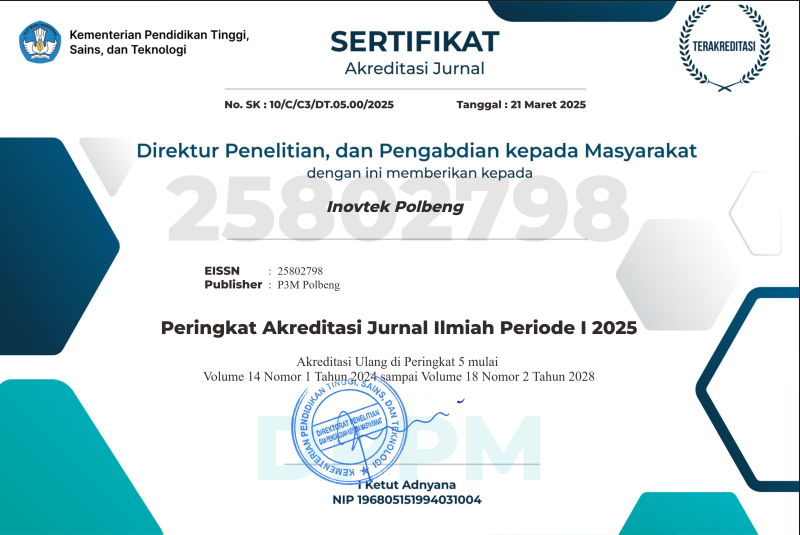IMPLEMENTASI PERHITUNGAN HYDROSTATIKA UNTUK SAFE LOADING CONDITION KAPAL BARGE 240 FEET
DOI:
https://doi.org/10.35314/scnk2x40Keywords:
Hydrostatika, , Kondisi Muat, , Kapal Barge 240 ft, , Stabilitas Statis, Tinggi Metasentris, , Kurva Righting Arm (GZ)Abstract
The 240-ft (≈ 73.15 m) Barge is widely employed for bulk coal transport, making the determination of its Safe loading condition essential for preserving static stability and ensuring operational Safety. This study implements a comprehensive suite of hydrostatic calculations—including the development of hydrostatic Tabels and righting arm (GZ) Curves, modeling of Metacentric radii (BMₜ, BMₗ), and evaluation of Metacentric Heights (GMₜ, GMₗ)—alongside a Trim analysis to determine the Longitudinal Centre of Flotation (LCF), Longitudinal Centre of buoyancy (LCB), and Moment to Change Trim (MCT) across six draft conditions (0.719–4.000 m). Numerical inclining experiments yielded area under the GZ Curve values ranging from 0.0850 to 0.1930 m·rad and a Range of stability (θ₀) of 23.6°–27.5°, satisfying local Barge criteria (area ≥ 0.08 m·rad; θ₀ ≥ 20°) but falling short of the IMO threshold (θ₀ ≥ 30°). Load combinations, supplemented by combined LCG and VCG calculations, produced a Safe loading envelope with deadweight limits of 1 157–5 225 tonnes and an optimal LCG Range of 41.00–41.60 m for each draft. Comparison with IMO MSC.267(85) and national Barge regulations confirms that the vessel can operate Safely provided the cargo is stowed within the envelope zone, GMₜ ≥ 0.15 m, area under GZ ≥ 0.08 m·rad, and θ₀ ≥ 20°. This study offers quantitative guidelines for vessel operators and designers to plan coal loading accurately, minimize the risk of capsizing, and comply with both international and local stability standards.












